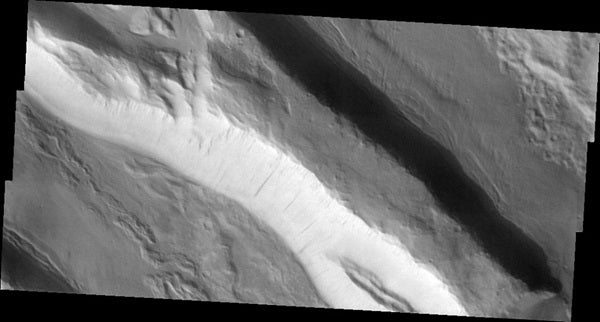“THEMIS has proven itself a workhorse,” said Philip Christensen from Arizona State University in Tempe. “It’s especially gratifying to me to see the range of discoveries that have been made using this instrument.”
Highlights of science results by THEMIS over the past 10 years include:
- Confirming that hematite is widespread on Meridiani Planum, which led NASA to send one of its Mars Exploration Rovers there
- Discovering carbon dioxide gas jets at the south polar ice cap in spring
- Discovering chloride salt deposits across the planet
- Making the best global image map of Mars
- Identifying safe landing sites for NASA’s Mars Phoenix spacecraft by finding the locations with the fewest hazardous boulders
- Monitoring dust activity in the martian atmosphere
- Discovering that a large impact crater, Aram Chaos, once contained a lake
- Discovering that Mars has more water-carved channels than previously thought
- Discovering dacite on Mars, a more evolved form of volcanic lava not previously known on the Red Planet
THEMIS combines a 5-wavelength visual imaging system with a 9-wavelength infrared imaging system. By comparing daytime and nighttime infrared images of a given area, scientists can determine many of the physical properties of the rocks and soils on the ground.
Mars Odyssey has a two-hour orbit that is nearly “Sun-synchronous,” meaning that Odyssey passes over the same part of Mars at roughly the same local time each day. In September 2008, its orbit was shifted toward an earlier time of day, which enhanced THEMIS’ mineralogical detection capability.
“Both Odyssey and THEMIS are in excellent health, and we look forward to more years of science with them.” Said Christensen.
NASA launched the Mars Odyssey spacecraft April 7, 2001, and it arrived at Mars October 24, 2001. On arrival, the spacecraft spent several months in a technique called aerobraking, which involved dipping into the martian atmosphere to adjust its orbit. In February 2002, science operations began.










